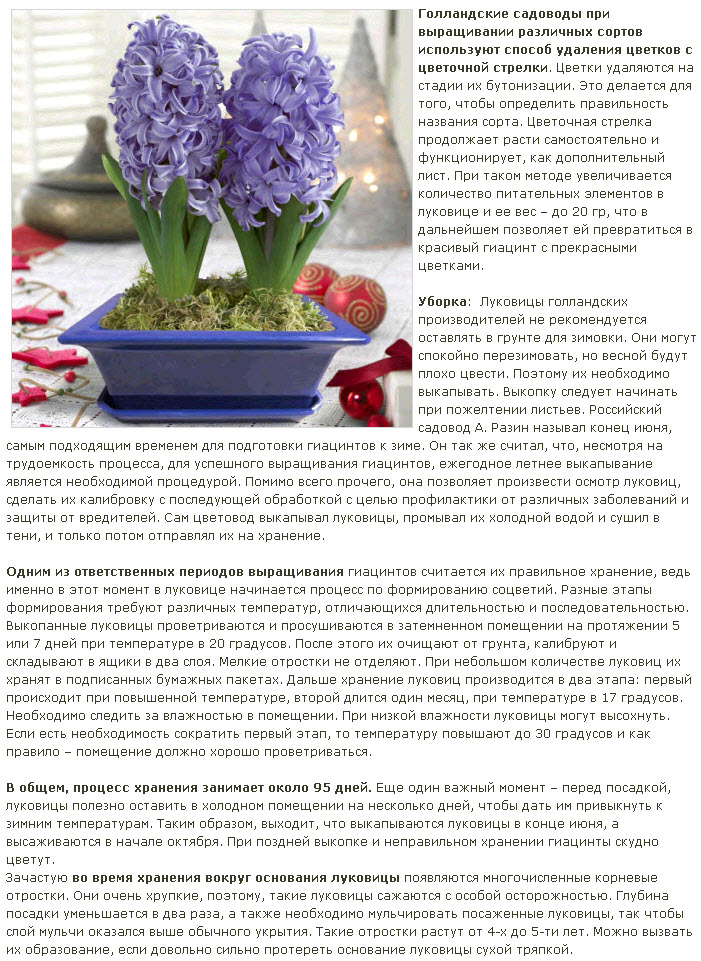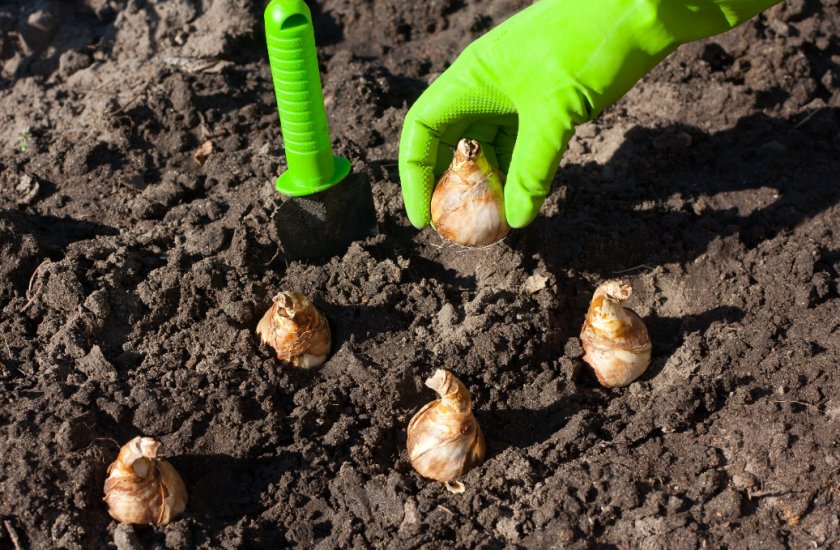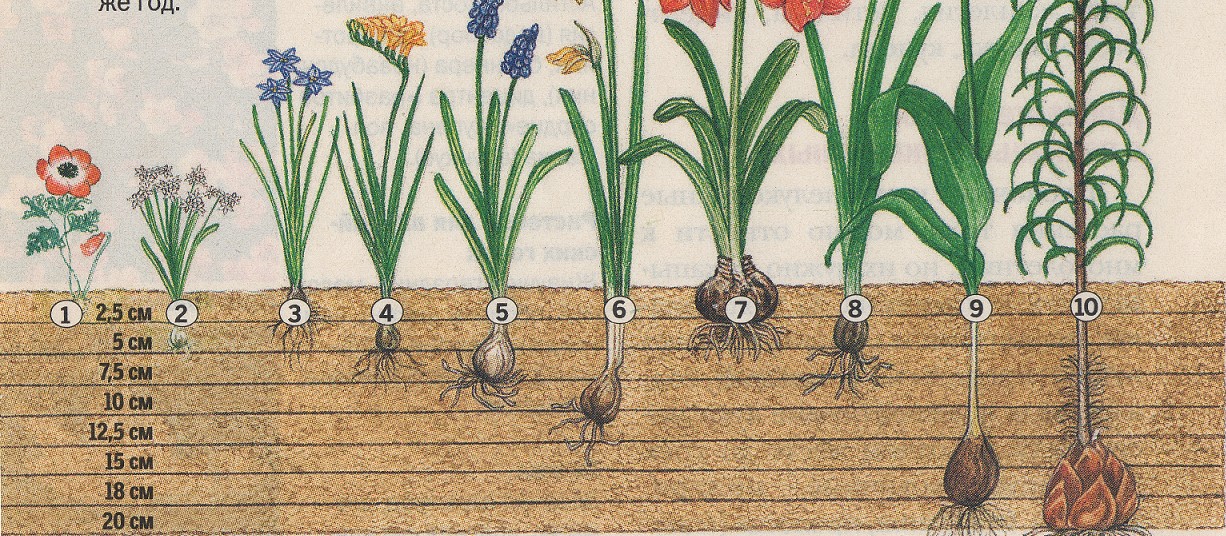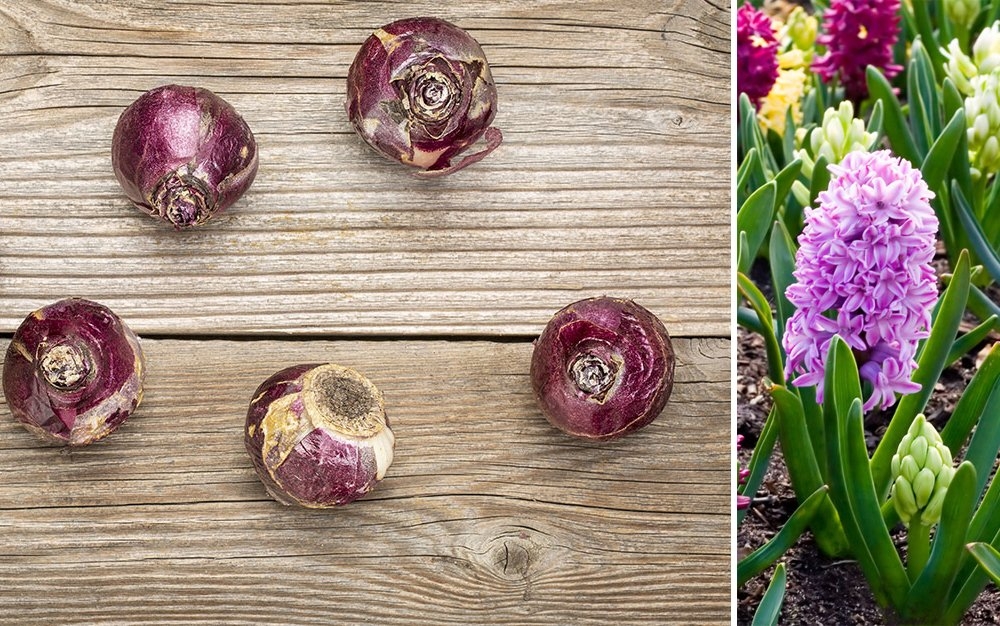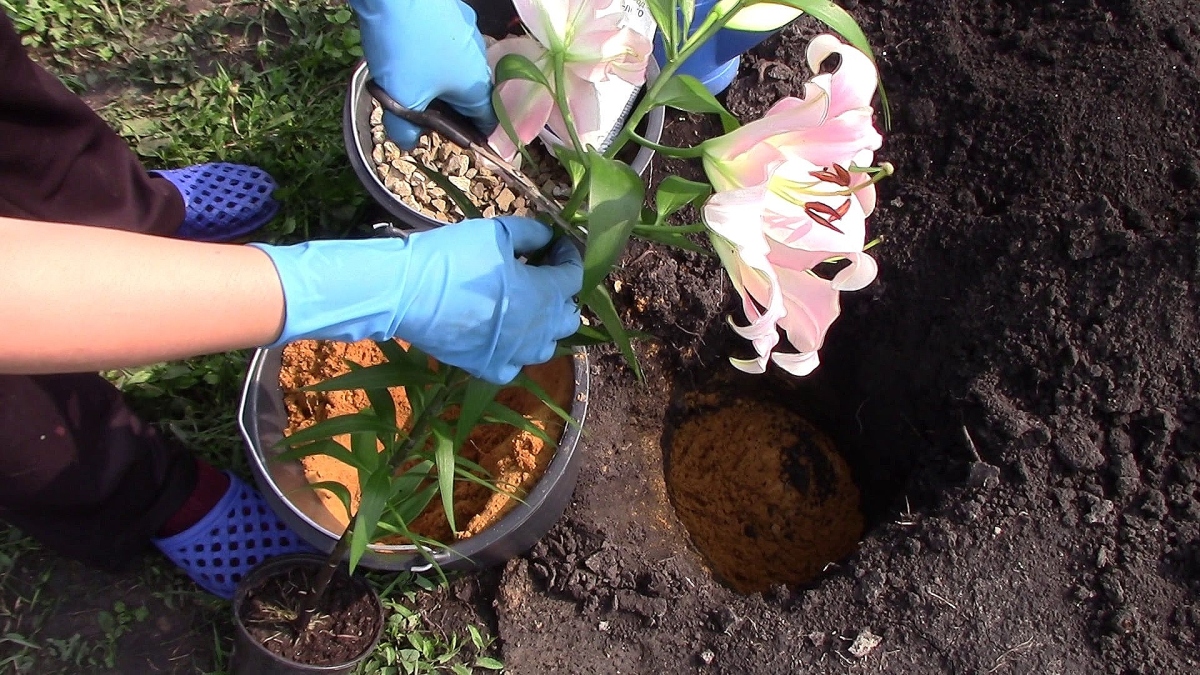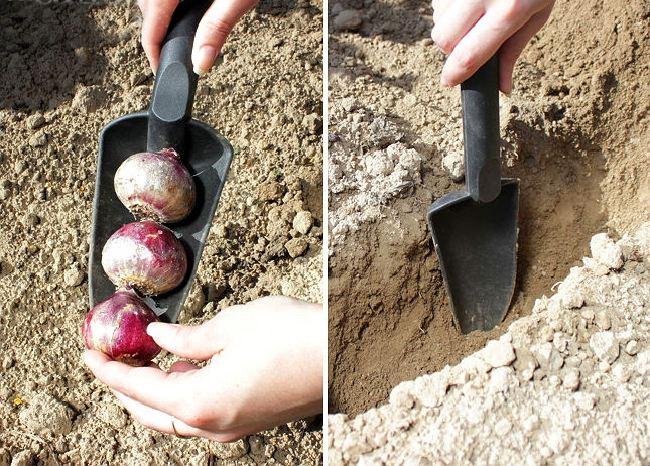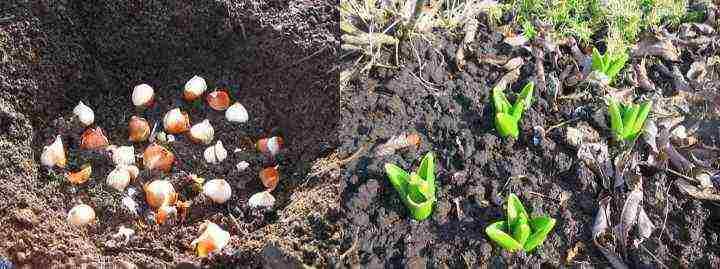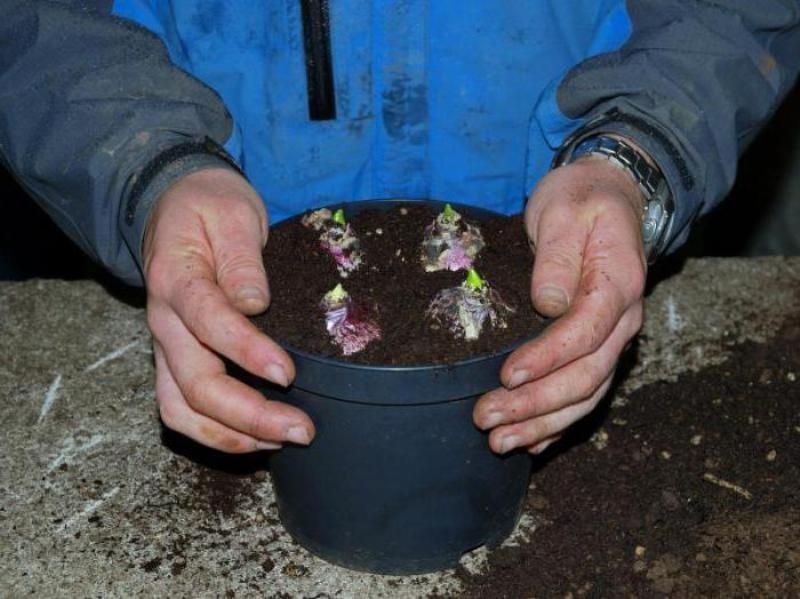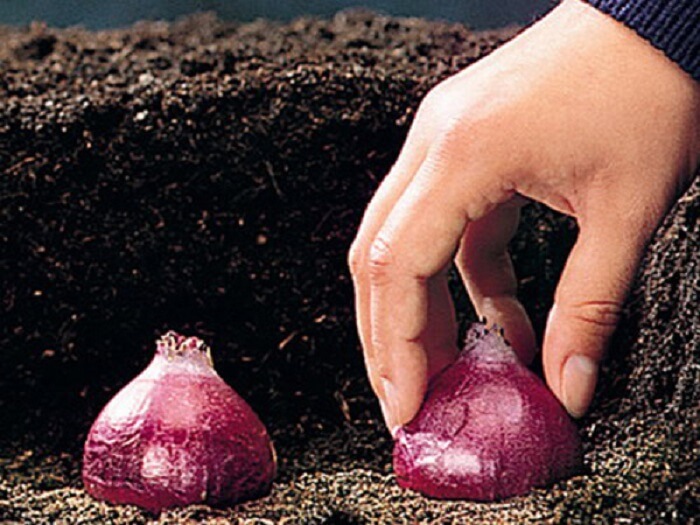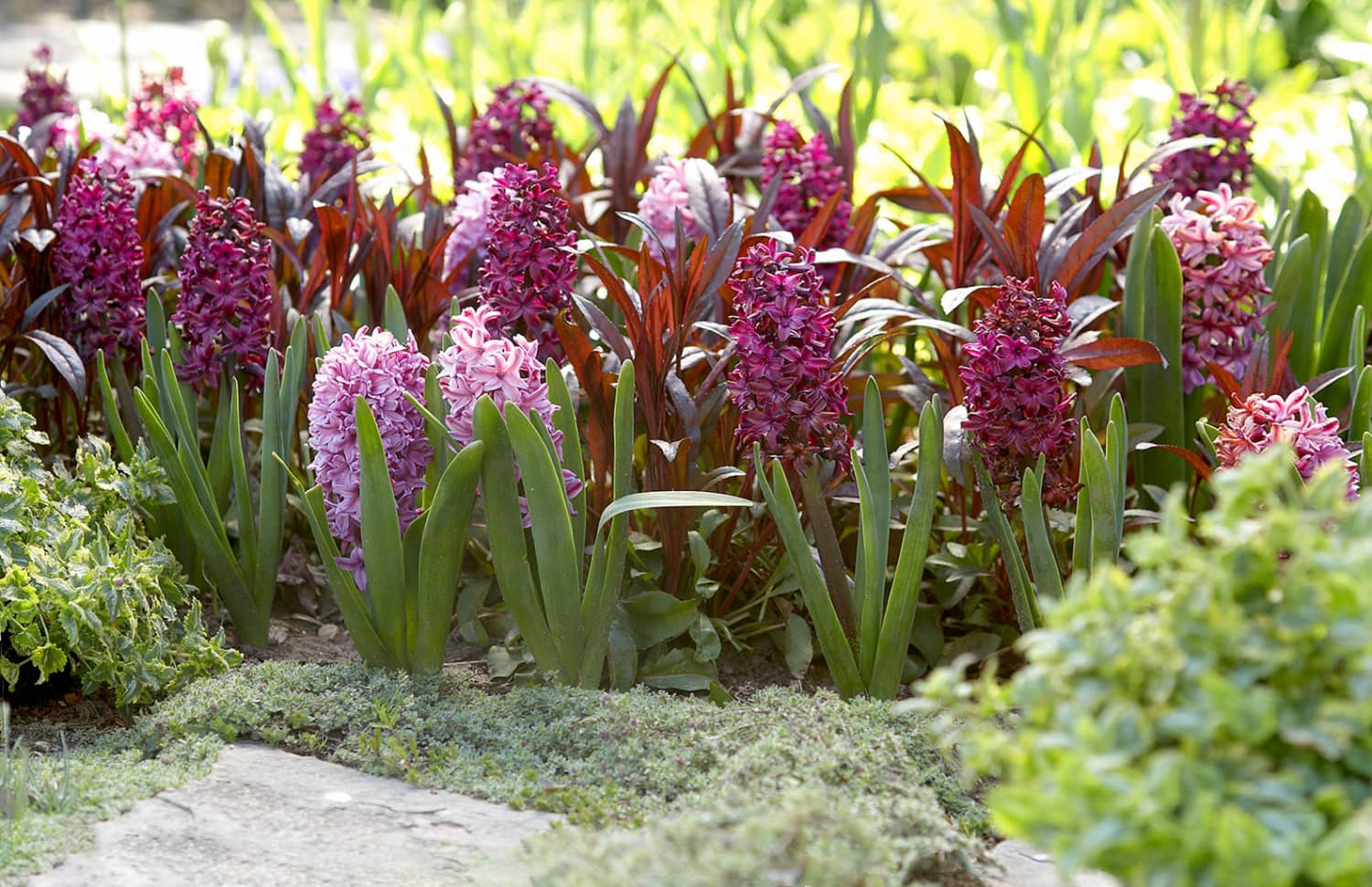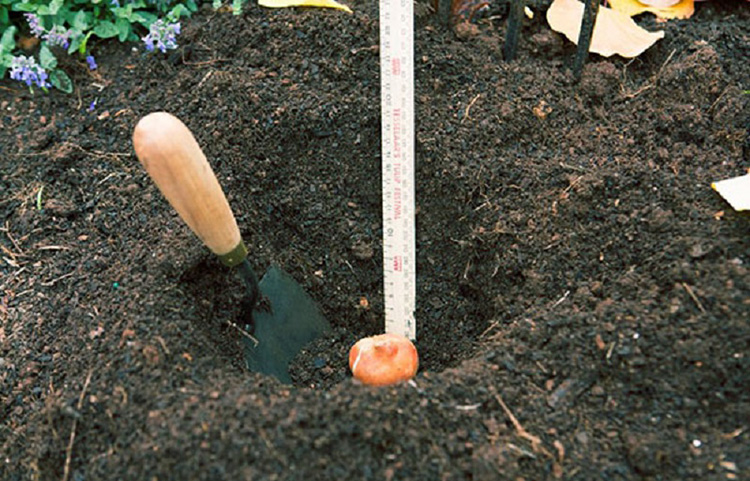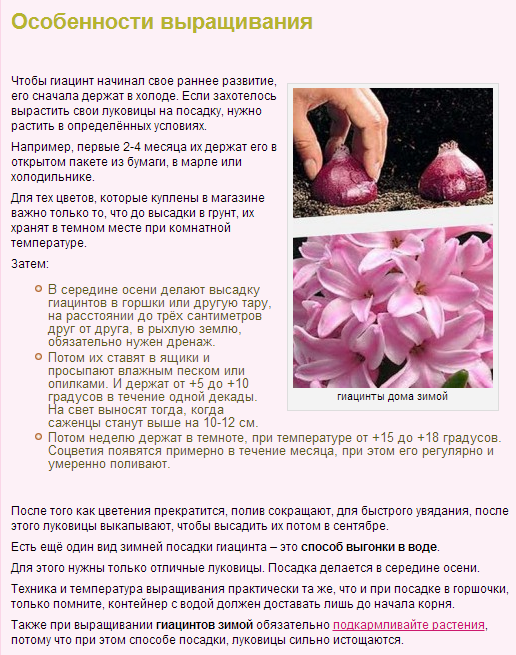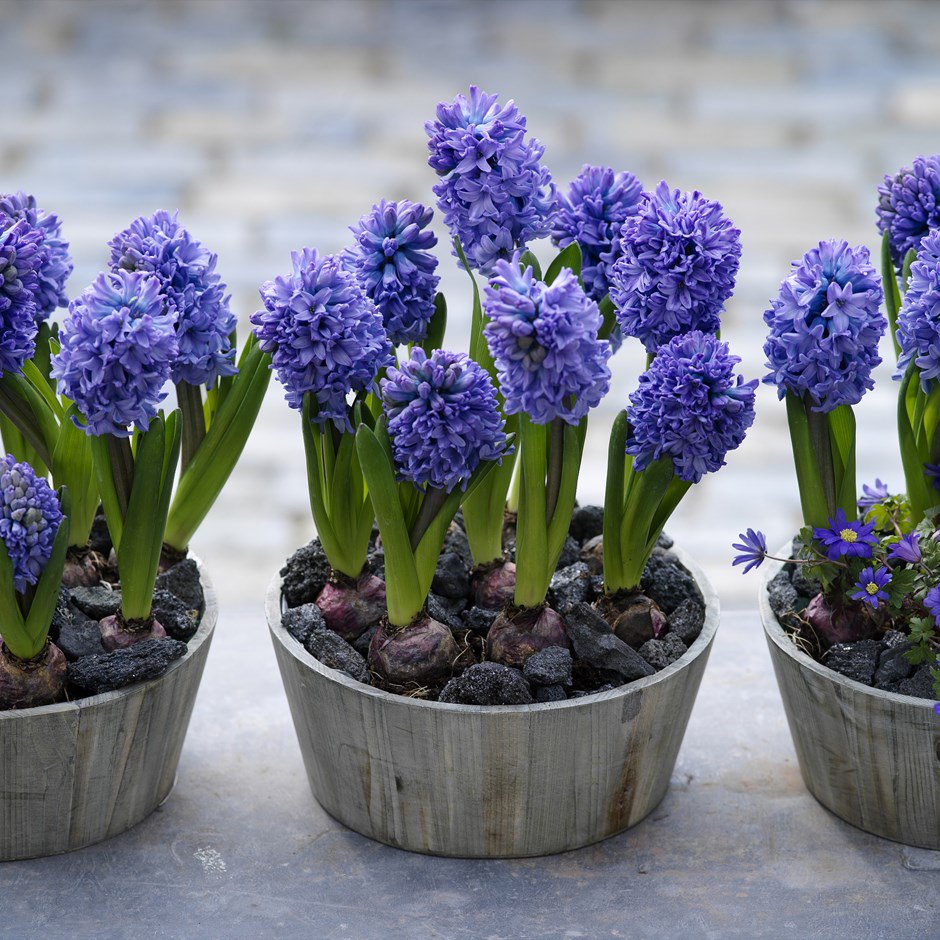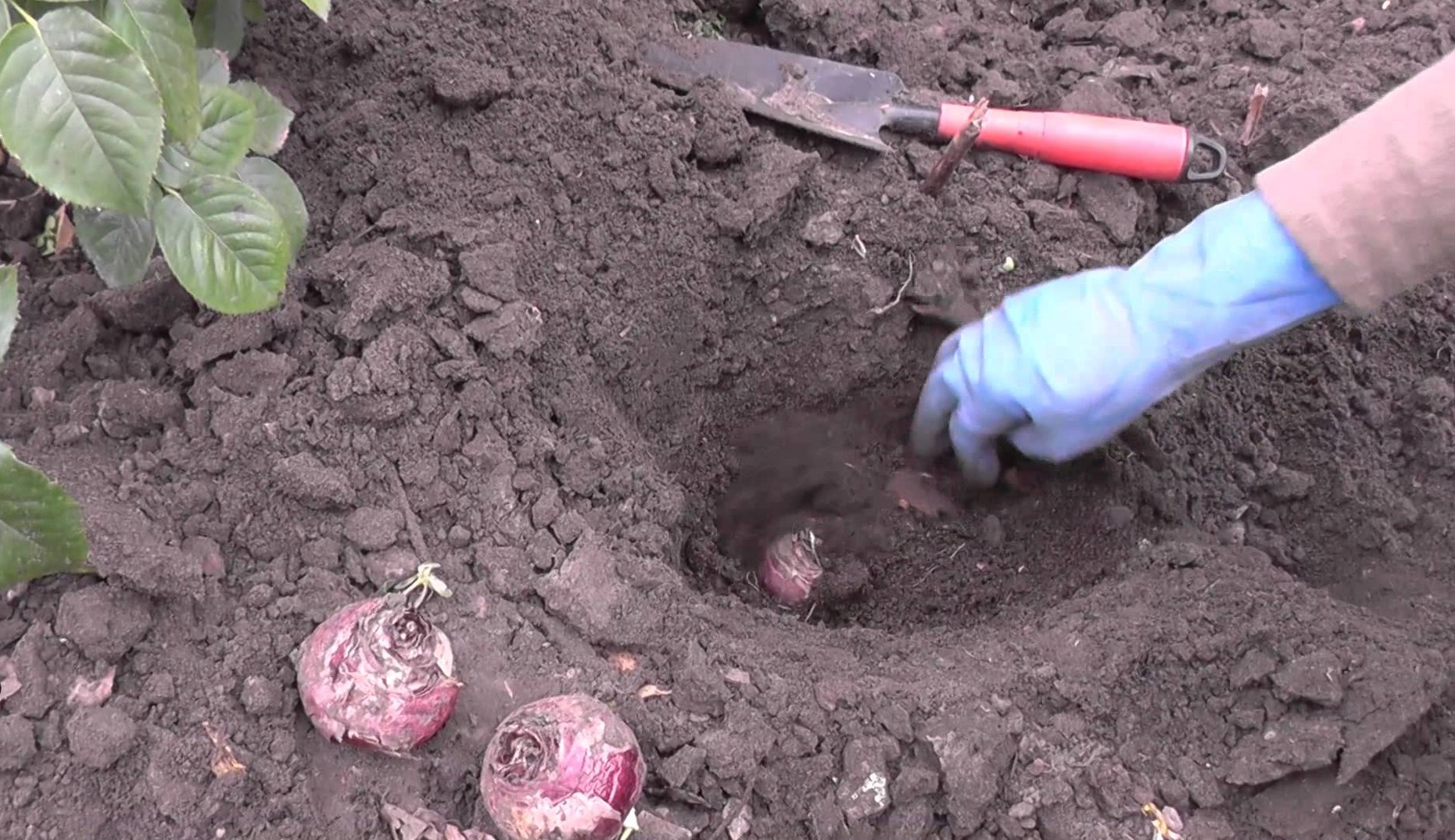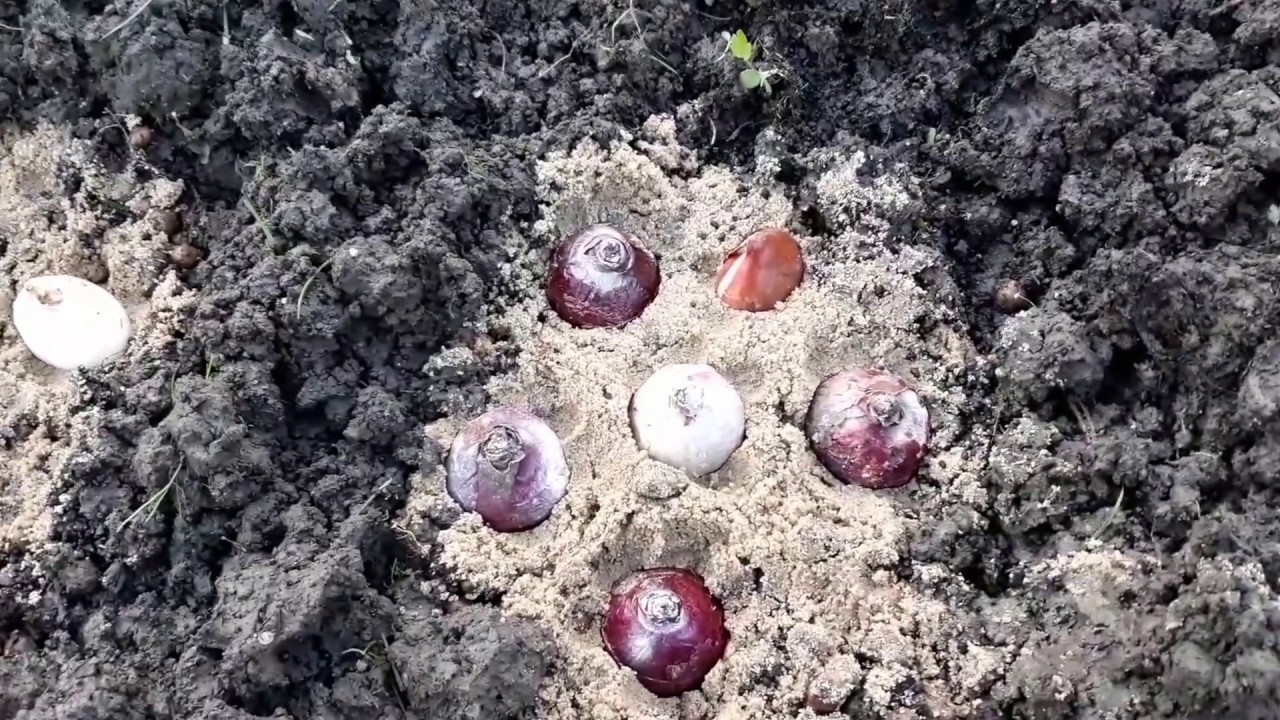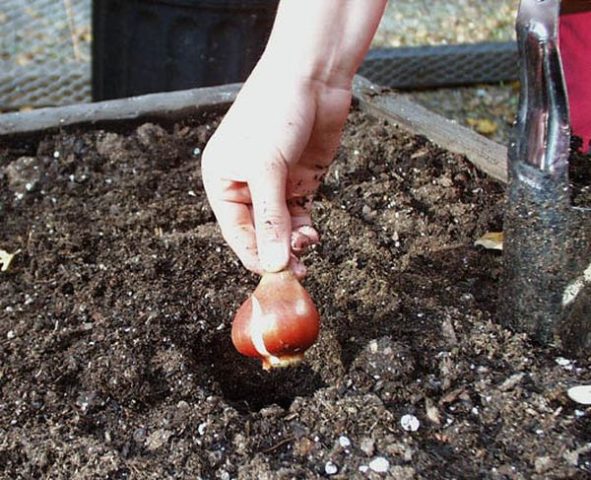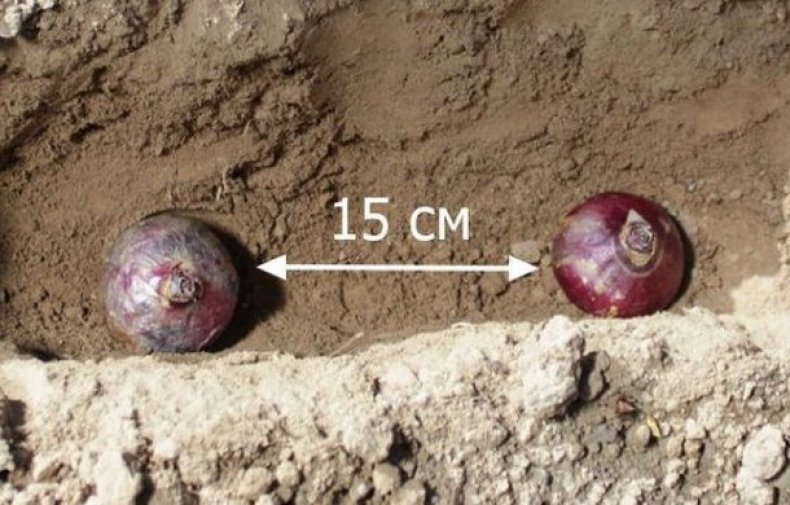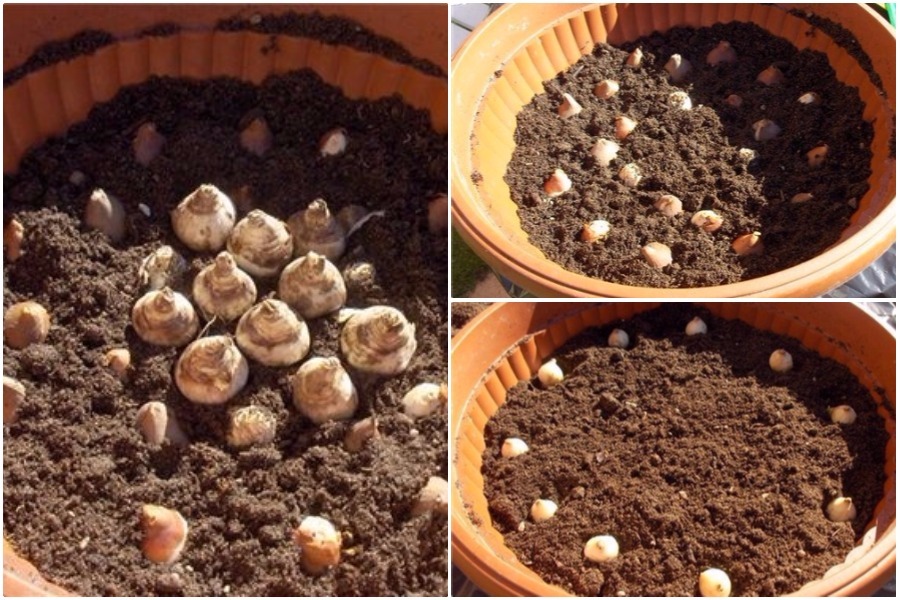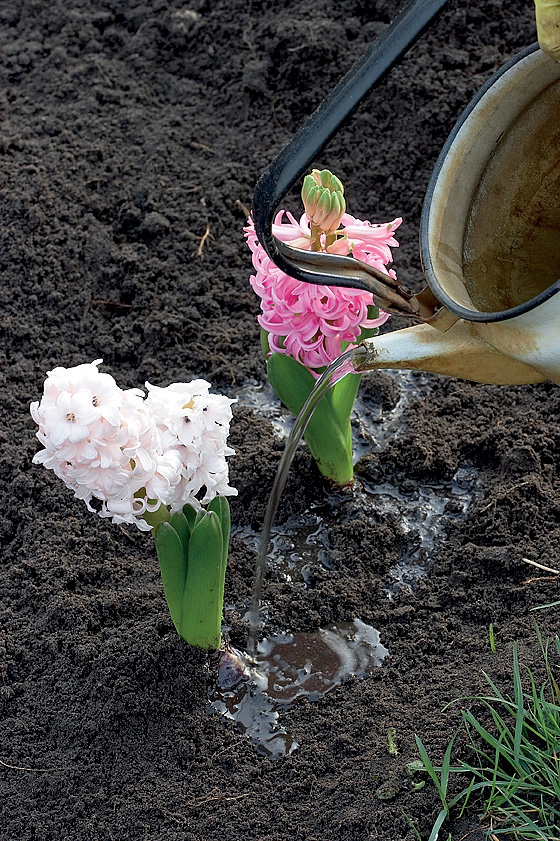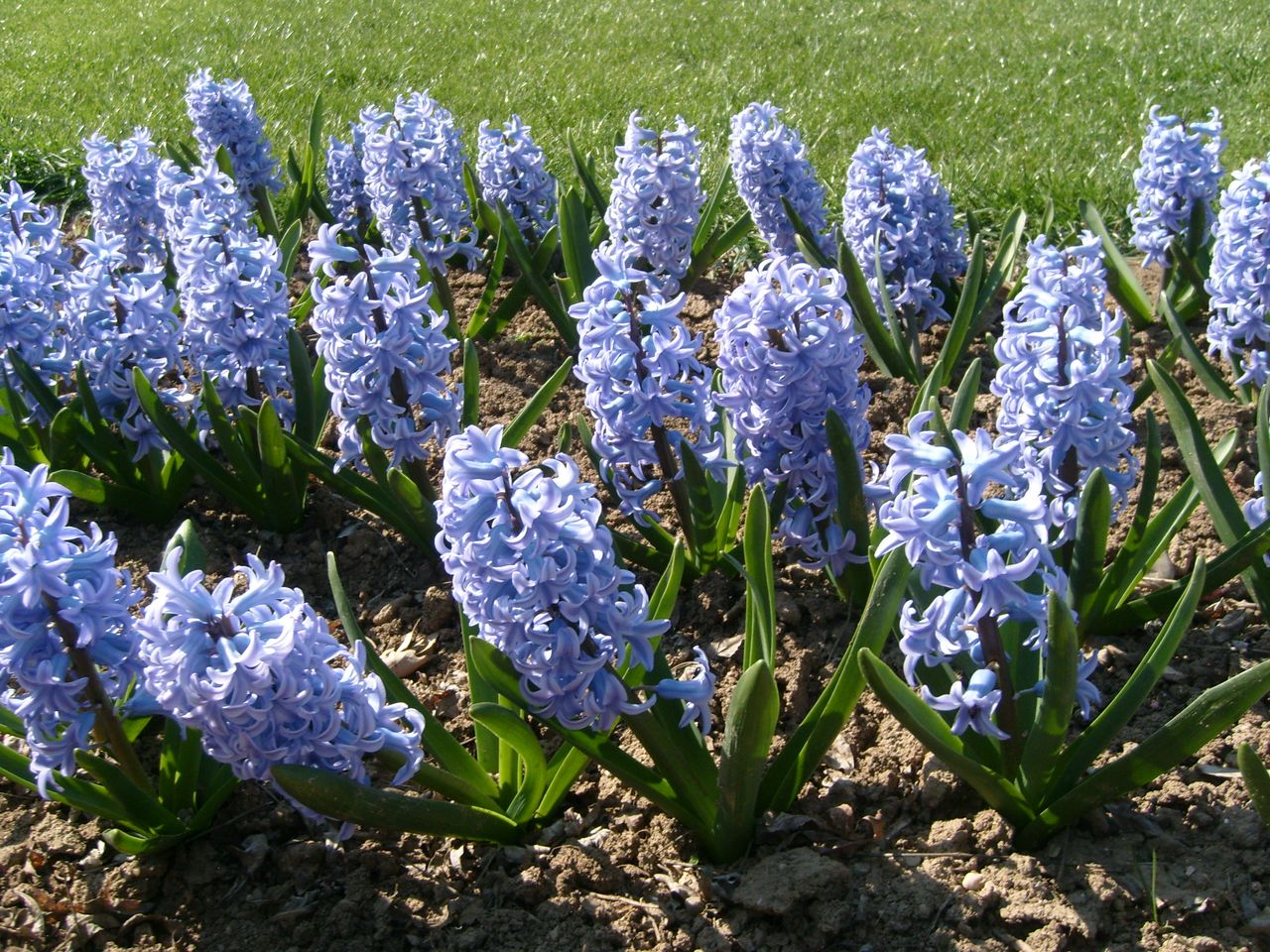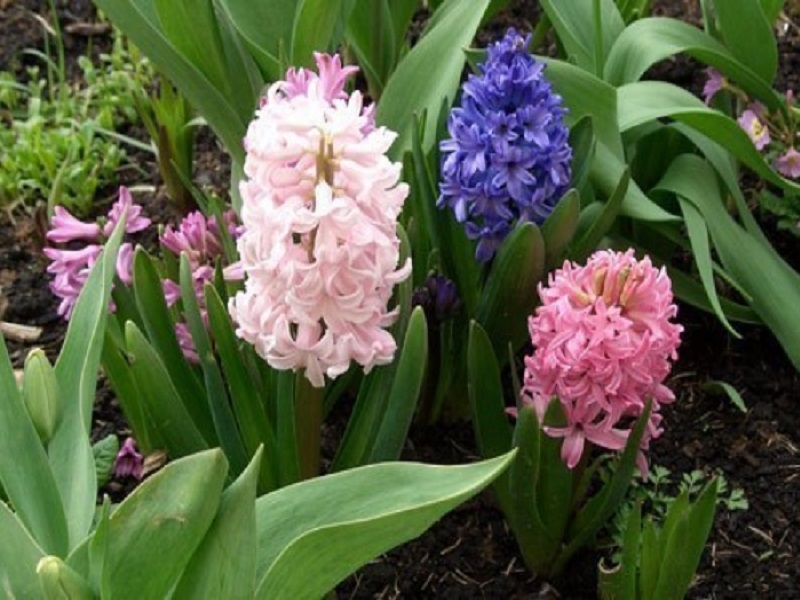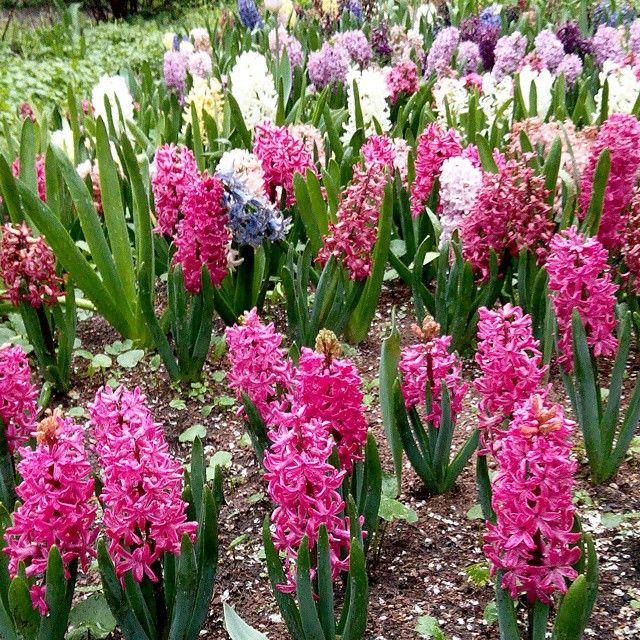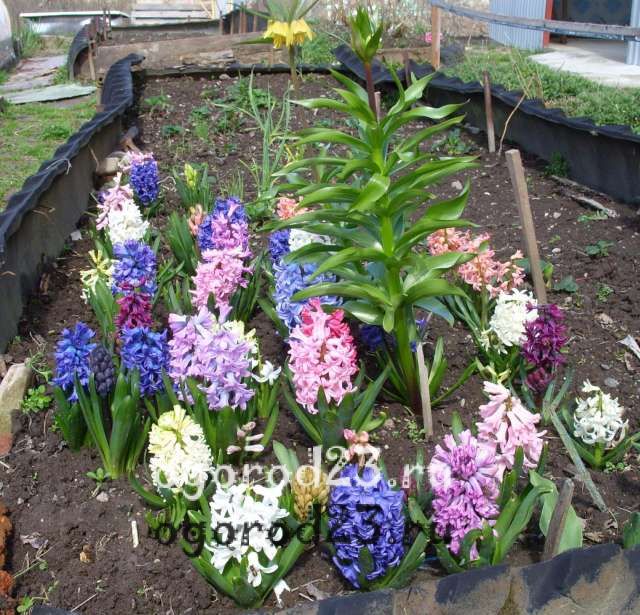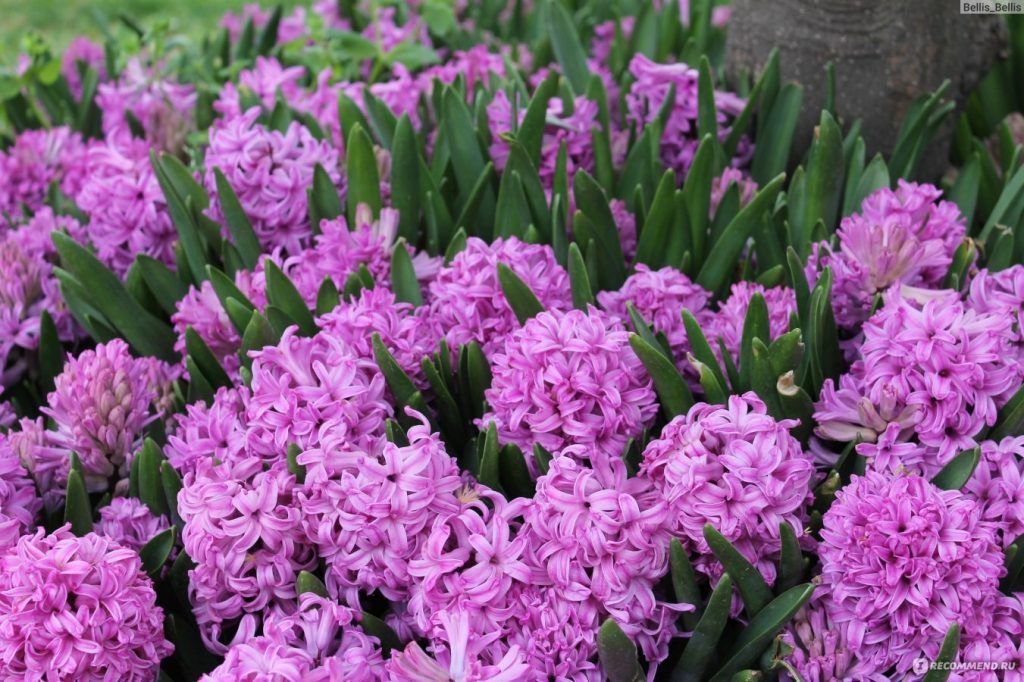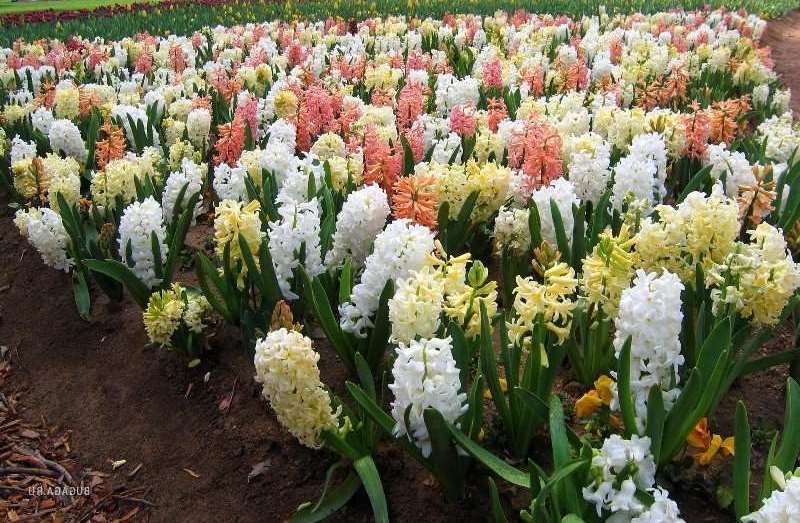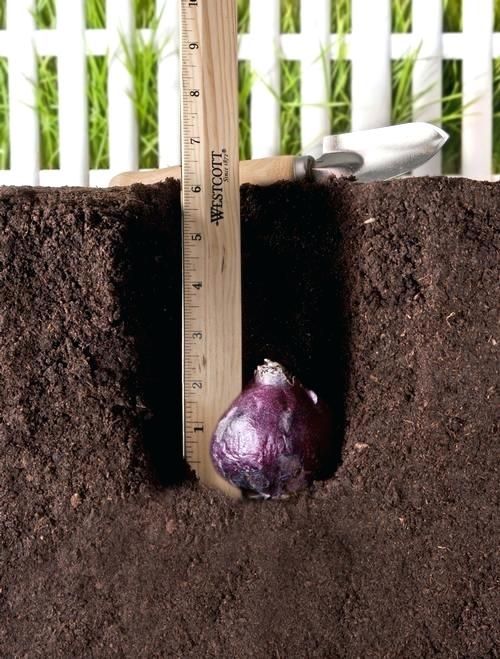Diseases and pests
Hyacinth planted in open ground is extremely rarely affected by diseases. Most often, hothouse flowers and for distillation suffer from this. Of the reasons that can lead to trouble with the plant, there may be the following:
- initially diseased planting material;
- insufficiently drained soil and, as a result, stagnant water;
- increased acidity of the soil;
- excess or insufficient amount of fertilizers, feeding with fresh organic substances;
- preventive dressing of the bulbs has not been carried out;
- planting plants too close to each other and to other plants;
- clogged with weeds.
Signs of damage to a flower can be as follows:
- stunting;
- curvature of the stem;
- early wilting;
- defects in planting material;
- defects of inflorescences and buds.
The most common disease that affects the planting tubers of hyacinths is bacterial rot. At the same time, the bulb becomes soft, gradually turning into mucus, exudes an extremely unpleasant putrid odor
During the growing season, attention should be paid to the appearance of stripes and spots on the stem and leaves, the presence of decaying areas, and growth retardation. In this case, the plant, together with the bulb, is disposed of, and the hole is etched with bleach.
Prevention: before planting, treat the onion with a fungicide, and the ground with a 5% formalin solution or bleach.
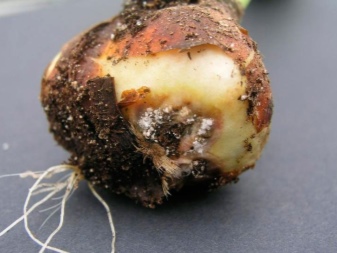
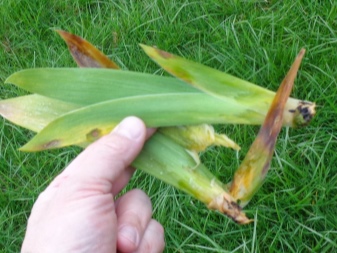
The next disease in terms of the frequency of lesions is penicillosis or "storage rot" - a fungal disease. Tubers that have been kept for a long time at temperatures below + 16 ° C at high humidity are infected. At the same time, light brown spots are found on the inner scales of the bulbs, and then completely the scales acquire a brown color, become soft. Such plants grow very slowly, poorly form a root system, there is a characteristic drying out of the tips of the roots, the stems become brittle. Prevention: store the planting material in a well-ventilated area, where the humidity is not more than 70%; in case of premature regrowth of the roots, the bulbs must be planted in the ground.


Various pests can cause great damage to hyacinths. The most popular parasite is the flower fly larvae, which eat the base of the leaves, thereby gnawing the bottoms of the plants. Effective means for saving flowers are Tabazol, Mukhoed and Aktara.
Onion mites can also do a lot of harm, the fight against which consists in mulching the earth around the flowers. But the most difficult opponent is the bear. The peak of its activity falls in the month of May, when the earth warms up, and the parasites begin to eat the already planted bulbs. To combat pests, shallow pits are dug on the site, filled with manure as bait and covered with a large piece of slate or board. After 2–4 weeks, the bear should be etched with such means as "Beard", "Boverin", "Grizzly" or "Medvetoks".
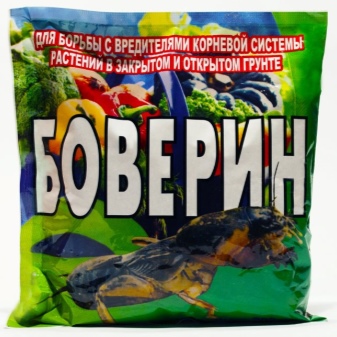

When to plant hyacinth bulbs outdoors in autumn
Like any other crop, hyacinths need to be planted at the most appropriate time. After all, if you plant them too early, then because of the warm, favorable conditions, they will start to grow and die when frost occurs. And if you do this too late, then the onion will not have enough time for rooting and it will freeze out at negative temperatures.
When is it better to plant hyacinth bulbs in autumn, in what month? On average, this is done in September and October. It is imperative to plant in open ground 3-4 weeks before the first autumn frosts. The optimal timing is also determined by the temperature of the soil: t of the soil should drop to 7-10 degrees Celsius at a depth of 15 cm.
In different regions of Russia, the timing of planting bulbs in autumn is different:
In the Middle Lane (Moscow region) - it is better to plant at the end of September; In Siberia, in the Urals, in the North-West (Leningrad Region) - the procedure is best carried out in the first half of September; In the South (Krasnodar Territory (Kuban), North Caucasus) - in first half of October.
Planting dates for hyacinths according to the lunar calendar
When choosing the time to plant a flower crop, you can also focus on the cycles of the moon. But first of all, it is naturally necessary to rely on weather and climatic conditions.
Planting dates for hyacinths according to the lunar calendar 2019:
-
Auspicious days:
- in August - 4-6, 18-23, 28, 29;
- in September - 1-5, 7-10, 17-24, 26, 27, 30;
- in October - 4-7, 9-12, 15-17, 19-21, 23-27.
-
Unfavorable days:
- in August - 15, 16, 30, 31;
- in September - 14, 15, 28, 29;
- in October - 14, 28.
Hyacinths after flowering
Hyacinths have faded - what to do?
Caring for hyacinths after flowering consists of giving their bulbs a chance to regain their strength. To do this, they must remain in the ground for some time. How to care for wilting hyacinths? It is only necessary to gradually reduce watering until it stops completely. In addition, this period accounts for the third fertilization with mineral fertilizers, which will add nutrients to the bulbs for flowering next year. When it's time to dig up the hyacinths after flowering, you will be prompted by their yellowed leaves.
In the photo: Growing hyacinths
Digging out hyacinths
The hyacinth bulbs should be dug up annually, otherwise the flowering may be much poorer next year, in addition, the risk of bulb disease increases. The annual digging also allows you to monitor the condition of the bulbs and the timely separation of the babies for rearing.
Do not wait for the leaves to die off and fall off, as it will be difficult to locate the bulb later.
Dig the bulbs with a shovel, since they sit deep in the ground, rinse in running water, pickle them for half an hour in a three to four percent solution of Karbofos, or keep them in water heated to 50 ºC for 10 minutes. Then they are ventilated and dried in a dark place at 20 ºC for a week.
- what and how
Choosing a place for landing
It should be noted right away that hyacinths planted in open ground require special conditions. These plants belong to the bulbous family, therefore they are very demanding on the temperature regime, as well as on the quality of the soil.
It is important to choose the right landing site. It is best to plant the plant in open, sunny areas that are not affected by the wind.
Advice! If the owner wants to extend the flowering time, it is better to choose an area that is in partial shade.

You also need to take into account such a moment: such plants do not like very much to have shrubs and trees growing next to them, which can form an extra shadow. In addition, such plants will definitely take nutrients and moisture from the soil, which also has a bad effect on hyacinths.
Despite the fact that this flower is very fond of moisture, you should not plant it in places with a high content of groundwater. The fact is that dampness can be harmful to the plant and lead to its death.
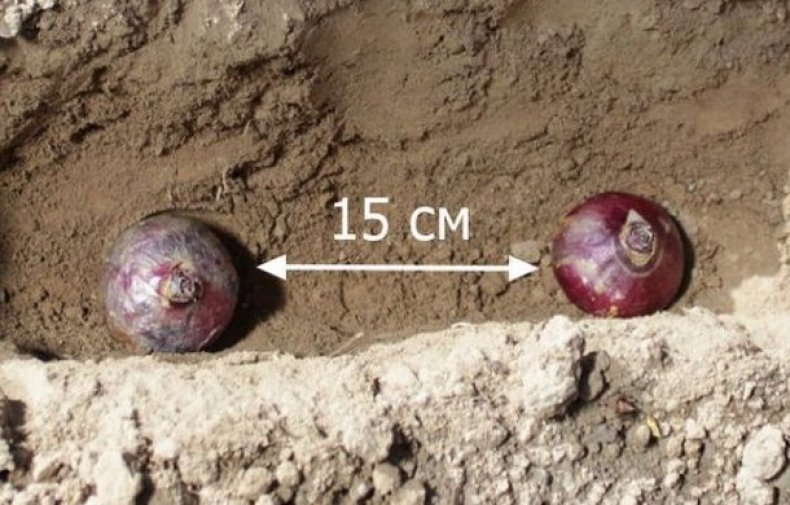 As for the soil itself, it should be slightly alkaline and loose. Planting and caring for hyacinths in the open ground in Moscow in the fall is carried out on the basis of standard recommendations:
As for the soil itself, it should be slightly alkaline and loose. Planting and caring for hyacinths in the open ground in Moscow in the fall is carried out on the basis of standard recommendations:
- We select the best site.
- Choosing a planting material.
- We plant at the beginning of September in the ground.
- We cover the plantings for the winter.
Please note! Planting and caring for hyacinths in the open field in the fall, for example, in the Urals, can be difficult due to cold weather.
Such simple and effective advice will surely help you to get an actively blooming flower bed next year. Also, do not forget about regular soil fertilization procedures.It is also a very important step in the cultivation of hyacinths.

When to plant tulips outdoors in autumn in 2019 A tulip is a common flower bed flower that looks spectacular in the company of other flowering plants….
Planting hyacinths in the fall in the ground
Soil for hyacinths
Hyacinths are planted in an area protected from the wind and illuminated by the sun, not far from bushes or trees that give shade at noon: hyacinths do not tolerate long exposure to direct sunlight. However, too close proximity of flowers with large forms will not do them good: the roots of bushes and trees will take away food from hyacinths.
Flowers grow best in humus-rich, drained soil of neutral or slightly alkaline reaction - not lower than pH 6.5. The optimal soil composition for hyacinths is turf, sand and leafy soil. Soil with an acid reaction should be limed, and it is advisable to add sand to the clay soil, and this should be done two weeks before planting.
The soil on the site for hyacinths is prepared from the end of July or from August: the earth is dug up to a depth of 40 cm, removing weeds and adding superphosphate (60-80 g / m²), ash or dolomite flour (200 g / m²) and humus or rotted manure in the amount of 15 kg per m². The introduction of fresh manure into the soil is categorically unacceptable.
How deep to plant hyacinths
The hyacinth bulbs are deepened according to the general scheme: after planting, there should be a layer of earth two of its diameters thick above the bulb. In other words, the depth of the bulb hole about 5 cm in diameter should be 15 cm.However, when planting, one should take into account not only the size of the bulbs, but also the composition of the soil: on light soils, the holes can be 2 cm deeper than the scheme, heavy - a couple of centimeters smaller.
How to plant hyacinths in autumn
Before planting hyacinths, their bulbs for disinfection are immersed for 30 minutes in a fungicide solution (Fundazol or Maxim) or in a pink solution of potassium permanganate.
The feeding area for an average hyacinth bulb is 15-20 cm, therefore, the holes should be located at the same distance. Small bulbs can be planted denser. You should know that it is advisable to use the largest hyacinth bulbs for forcing, and in the garden it is better to plant medium-sized bulbs that are more resistant to diseases and adverse weather conditions.
If you are planting hyacinths in dry soil, first spill the holes and let the water soak, then put a layer of coarse sand 3-5 cm thick on the bottom of each hole, lay a bulb on it, cover it up to the neck with sand, and fill the remaining space with soil. After planting, the ground is slightly trampled.
Preparing the bulbs
After the bulbs have been in storage for some time, it is advisable to subject them to processing so that they germinate faster in new soil. To do this, it is advisable to dilute potassium permanganate in clean water in advance (to obtain a weak one percent solution of potassium permanganate) and hold the planting material for several minutes in this solution.
This action will provide the bulbs with primary protection against all kinds of bacteria and parasites that may inhabit the soil.
In addition to potassium permanganate, you can also use any of the fungicides you have in stock:
- Maksim;
- Fundazol;
- Homa.
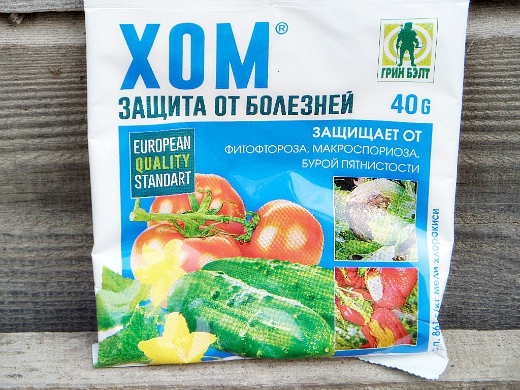
Homa fungicide
Each of these products has its own characteristics of impact, therefore, before use, it is important to read the instructions on the packaging.
Bulb selection
The preparation of planting material implies a mandatory procedure for rejecting spoiled, cracked or showing signs of disease on the bulbs. You can select the bulbs that will give the best yield by focusing on the following signs:
- in diameter, healthy and strong bulbs should be from four to six or even seven centimeters (however, the dimensions of the planting material largely depend on the variety. For example, the terry variety is small);
- the diameter of the bulb should be one and a half times the circumference of the bottom;
- the planting material should be strong and elastic to the touch. Hulls and other plant residues should not crumble from it.
Only the best specimens should be selected for planting.
Features of planting hyacinths in spring
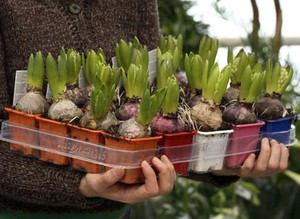 Many gardeners are interested in: when to plant hyacinth in open ground - in spring or autumn? Most often they do this in the fall, but some prefer to plant in the spring. In this case, a sandy cocoon is created, which is sprinkled with earth.
Many gardeners are interested in: when to plant hyacinth in open ground - in spring or autumn? Most often they do this in the fall, but some prefer to plant in the spring. In this case, a sandy cocoon is created, which is sprinkled with earth.
In order for the plant to start blooming in the same year, it is necessary to put the tubers in the freezer an hour before planting, but it is not recommended to overexpose them.
The disembarkation must be done after the threat of frost has passed. So that the harvested soil is not washed away by the rains, the soil must be covered with leaves or thin plywood sheets.
The bulbs must be healthy and medium-sized - in this case, the flower will be more resistant to bad weather conditions. They must be planted to a depth of about 15 cm with a row spacing of 20 cm. Bulbs smaller than 5 cm in diameter should be planted denser.
River sand is poured into each hole with a layer of three cm, after which the bulbs are laid and sprinkled with soil. Sand is necessary in order to protect the planting material from infections and waterlogging.
If planting is carried out in large quantities, it is best to make high beds, then caring for this plant will become much more convenient. When it gets cold, the flower must be covered with peat or sawdust.
Top dressing
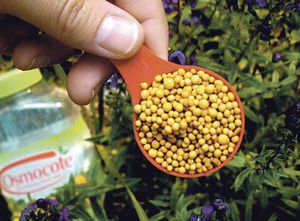 After the hyacinth has been planted, it must be fed, since nutrients are required for the normal development of the bulbs.
After the hyacinth has been planted, it must be fed, since nutrients are required for the normal development of the bulbs.
These are, first of all, mineral fertilizers, which are applied in the spring, when the snow has completely melted. The best and most effective are ammonium nitrate and potassium chloride.
As soon as the buds appear, a second feeding is carried out with mineral nutrients. For the third time, only potassium chloride should be added. It is recommended to loosen the soil each time so that the roots receive as much air as possible.
It is important to observe the following care guidelines:
- Be sure to remove weeds that can destroy the plant.
- Flowers are watered abundantly, but infrequently.
- Diseased specimens must be removed and burned, otherwise diseases and pests will spread to other plants.
Protection from harmful factors
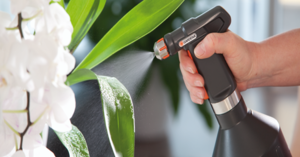 When this flower is taken care of in the wrong way, it can lead to dire consequences. For example, due to a lack of light and excessive moisture, the leaves begin to turn yellow and stretch in length.
When this flower is taken care of in the wrong way, it can lead to dire consequences. For example, due to a lack of light and excessive moisture, the leaves begin to turn yellow and stretch in length.
If water gets on the buds, they may not open. If they are absent at all, then this may be due to the planting of bulbs that are too small or their content is incorrect.
Hyacinths can be attacked by bacterial rot, which can, after a while, turn the bulbs into mucus with an unpleasant odor.
It is useless to fight this trouble, so the plant should be dug up and burned, and the place where it was planted must be etched with bleach or 5% formalin solution.
Thus, we can conclude that it is possible to plant a plant in open ground in spring. The main thing is that there are no more frosts on the soil. Proper care of it will allow you to grow a gorgeous plant with very beautiful flowers that will delight the eye for a long time in the garden.
When to plant hyacinths?
The optimal dates for planting hyacinths are late September - early October. If you plant the plants ahead of time, they will quickly start growing and die from frost. And if you are late with the planting dates, then the bulbs will not have time to take root before the soil freezes.
If you decide to plant hyacinth bulbs later (late October - mid-November), be sure to cover the planting site with compost, spruce branches or fallen leaves.
For good flowering, the correct planting site is also important.It is advisable to plant heat-loving hyacinths where there are no drafts, but a lot of sun
In addition, it is better to protect hyacinths from too wet soil - plants can rot.
Landing in open ground
In order for the plant to please with its lush flowering inflorescences, preliminary preparation is required before planting.
The choice of planting material
Hyacinth bulbs must be prepared for planting. To do this, they are treated with a fungicidal mixture (this will help protect the bushes from diseases and fungi). Immerse the bulbs in the solution for half an hour, and only after that you can start planting them.
Site selection and lighting
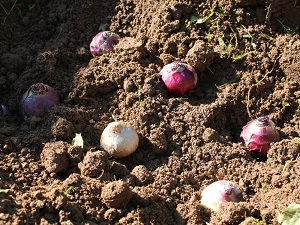
It is important to choose only well-lit places where there are no drafts or strong winds. It is best to choose a flat area with a slight slope (to avoid stagnation of melted snow in the spring)
Make sure that groundwater flows no closer than 50-65 cm from the plantings.
Priming
Hyacinths love well-flavored soil, which contains a lot of humus. But flowers will not tolerate fresh manure, it cannot be added to the soil. The soil must be water-permeable. If the soil on the site is too clayey and dense, then you need to add peat and coarse river sand to it. The plant does not like acidic soils, it is necessary to bring the pH level to 6.5 and above with the help of lime or chalk.
Timing and air temperature
It is customary to plant hyacinths in mid-autumn (and not in spring, as many are accustomed to). Optimal time: end of September - mid-October. If you plant the bulbs earlier, then the flowers can actively grow and not tolerate the cold weather. If you plant flowers later, then they simply will not have time to take root and will die with the first frost.
On a note! It is important to make sure that the bushes do not stand in direct sunlight, they like diffused light.
Landing rules
Disembarkation process:
- Make small holes in the prepared soil. Observe a distance of 15-20 cm between each planting. The depth of each hole should be 16-19 cm;
- Prepare the substrate. To do this, mix peat, humus, coarse sand (if the soil on the site is clayey and dense);
- Pour a little substrate into each well;
- The treated bulbs can now be planted. Press each bulb against the substrate; air pockets should not form during planting, this can damage the shrub;
- Cover the planted bulbs with a substrate, and then with ordinary soil;
- Water the planting thoroughly;
- As soon as the temperature begins to drop outside, you need to close the plantings with dry foliage, spruce or other insulation. If it rains a lot during the season, then it is better to cover the plantings with a film so that water stagnation does not form and the roots of the plant do not begin to rot.
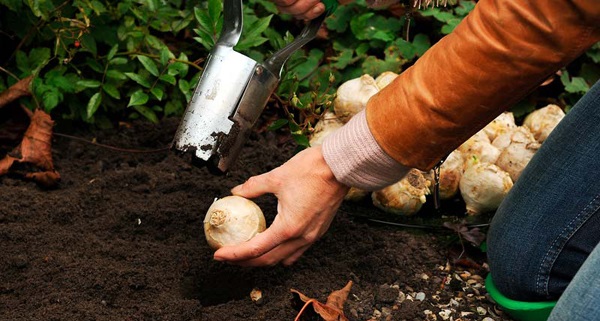
Types and varieties of Hyacinth for open ground
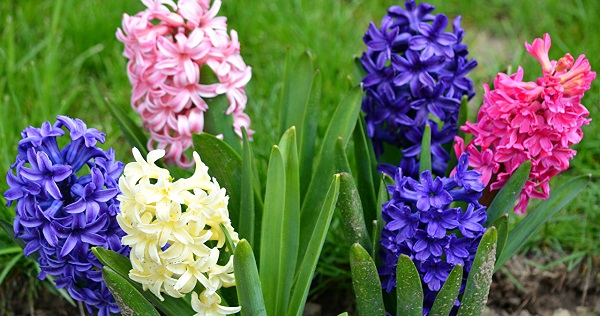
Since it has already been said that with the selection of varieties and types of hyacinth is not so simple, it will be difficult to consider all the available subspecies of a flower.
Now it is customary to distinguish three main types of plants:
- Hyacinthus orientalis (oriental);
- Hyacinthus litwinowii (Litvinov's hyacinth);
- Hyacinthus transcaspicus (Transcaspian).
It is these three species that are used by breeders to breed other varieties and subspecies.
You can also consider the classification in terms of flower shape (double and simple), flowering time (early, mid and late varieties), and color of the inflorescences.
Blue and blue:
- Perle Brillante. Belongs to the category of late-flowering species. The inflorescences of the plant are painted in blue and blue shades, the bush grows to a height of 30 cm. It blooms for 25 days;
- Marie. Refers to early flowering varieties. It does not bloom for long (only 15-17 days). The flowers have a deep blue tint with a purple stripe along the inflorescence;
- Queen of the Blues. A medium flowering variety that blooms for about 2 weeks. The bush reaches a height of 25-30 cm. The shade of the inflorescences is pale blue. Flowers have a light aroma.
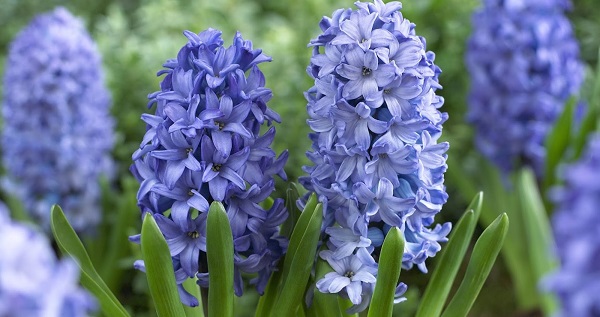
Purple and lilac:
- Blue Magic.It grows up to 30 cm in height, does not bloom too long (only one and a half weeks). The flowers have a deep purple-violet hue;
- Indigo King. Refers to late flowering varieties that bloom for about 2 weeks. Each stem has a length of 16-18 cm. The inflorescences are colored purple with a black tint (the surface of the flowers is glossy);
- Bismarck. An early flowering variety that blooms for about 16 days. The stems of the bush grow up to 23-26 cm. Flowers have a violet-lilac color with a longitudinal stripe of a darker shade.
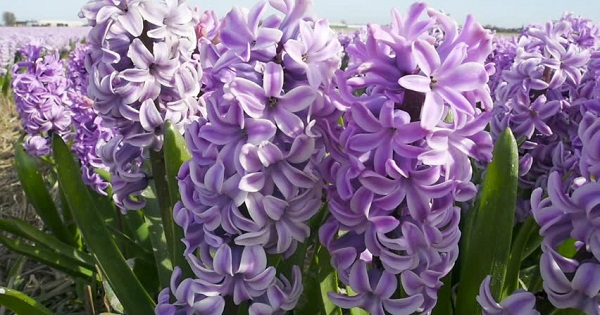
Pink:
- Moreno. Included in the category of early flowering varieties. It blooms for 14-19 days. Each inflorescence reaches 21-24 cm in length. Flowers are painted in a rich crimson color with a longitudinal stripe of a darker shade;
- Anna Marie. Tall bushes of this variety (21-26 cm) are medium flowering. Inflorescences bloom for 16-18 days, while they have a pale pink color;
- Gertruda. It blooms for 14-16 days, blooms late. In height, each stem of this plant reaches 24-26 cm. Each flower is painted in a rich dark pink hue.

Red:
- Hollyhock. Blooms for 16-19 days, but blooms late. Its stems reach 21-23 cm in height. The whole bush is covered with double crimson-red flowers;
- La Victoire. An early and rather tall variety (21-27 cm). The flowers have a glossy reddish-pink surface. It does not bloom for long, only a week and a half;
- Tubcrgen's Scarlet. A medium flowering variety that blooms for about 20 days. The inflorescences grow up to 23 cm in height. The flowers are painted in a rich red hue.
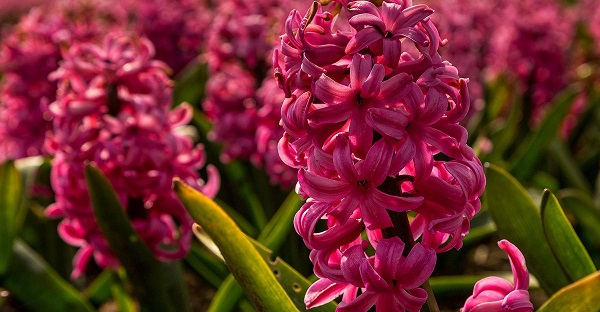
White:
- Arentine Arendsen. It blooms early and blooms within 16-19 days. The bushes of the plant are quite tall - 22-23 cm. Each flower is painted in a white or cream shade;
- Snow Crystal. The bushes of this variety are covered with double white flowers that bloom for 14-19 days (bloom late). The plant reaches a height of almost 30 cm;
- Madame Sophie. Medium, two weeks blooming. The length of each stem varies between 20-24 cm. The flowers have a double texture.
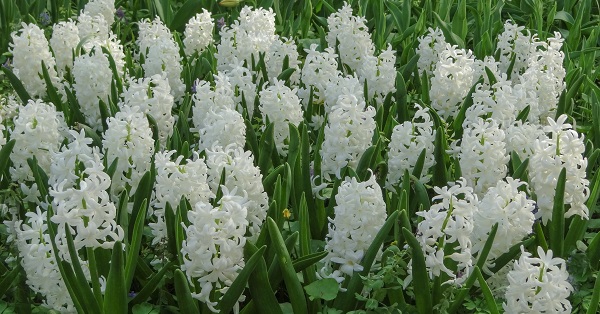
Orange and yellow:
- Yellow Hammer. Each inflorescence is 24-27 cm long and blooms for about 2 weeks. The flowers have a bright yellow tint, but at the end of flowering they can fade to light yellow;
- City of Haarlem. Bushes of this variety bloom late, but bloom for almost 20 days. Each stem grows up to 27-28 cm. Bright yellow flowers by the end of flowering turn into cream-colored inflorescences;
- Oranje Boven. These hyacinths bloom for over 2 weeks. Each inflorescence grows up to 25 cm high. The end of the stem is decorated with salmon-apricot flowers, decorated with a dark pink border.

Distillation
If you want to speed up the growth of hyacinths, then you can always turn to such an option as forcing. Hyacinths can be forced both in soil and in the aquatic environment. However, the pot and soil option seems more familiar to most gardeners, so it is used more often.
For forcing, as well as for planting in open ground, it is important to prepare in advance. In order for the bulbs to germinate, they must undergo summer storage at high temperatures - at least twenty-five degrees
Also, it should be borne in mind that only large planting material is suitable for forcing - the bulbs you choose should not be less than five centimeters in diameter.
Forcing hyacinths at home
Forcing hyacinths: step by step instructions
Step 1. Choose a small container that does not differ significantly from the diameter of the bulb
When the hyacinth is immersed in a spacious pot, the plant will take much longer to adapt and root, therefore it is important to choose a proportionate vessel. When growing several hyacinths at the same time, you can use the cactus
The container you select must match the size of the bulb
Step 2. Make a few holes in the container and place planters or polystyrene on the bottom, which will act as drainage and remove excess moisture, preventing the bulb from rotting.
Before immersing the soil mixture, it is necessary to make a drainage layer
Step 3. As a soil mixture, you can use different components, however, the optimal "formula" is recognized, consisting of peat, sand and garden soil in equal quantities. Some gardeners use only garden soil and sand from this list, giving up peat.You can even grow hyacinths in one river sand, since bulbous plants do not need nutrients during the entire growing season. The potting soil should fill the container about halfway.
Hyacinths adapt easily even to sand, getting nutrients from the bulb itself
Step 4. When placing hyacinths, do not try to deepen them into the sand or soil. Put the planting material in the soil mixture and cover the bulbs with wet sand so that they remain one and a half centimeters open on top. Then tamp the sand with your hands and pour.
Hyacinths should be slightly peeking out of the sand layer
Watering is carried out after the hyacinths have been sprinkled with a layer of wet sand on top.
Step 5. Pick up a thick paper bag that does not let in light and cover the container with the bulbs with it, signing the date. In this position, hyacinths will spend the next month and a half at a temperature of five to ten degrees. If this condition is not met, you run the risk of encountering deformed peduncles, or with a lack of flowering.
Bulbs should be kept out of direct light for the first few weeks.
Planting hyacinth outdoors after flowering
After the hyacinth has faded and the leaves are completely dry on it, the plant should be transplanted into open ground. Usually this moment comes in June. The bulbs must be removed from the pot, cleaned of residual soil and inspected. If dark spots or rotten areas are visible on the surface, they are cut out with a sharp, sterile knife.
Then the bulbs are disinfected by soaking for 20-30 minutes in a weak solution of potassium permanganate, and then dried. During the summer, hyacinth bulbs are stored at 18–22 ° C until planting in autumn. It is best to put the planting material in a cardboard box with holes; plastic wrap or storage bag is absolutely not suitable.
The timing of planting hyacinths in the ground depends on the region. In the middle lane, planting work is carried out at the end of September or at the beginning of October, so that rooting takes place before the onset of frost. If the bulbs were healthy and large, they will most likely bloom in the spring. If this does not happen, flowering should be expected in a year.
Distilling hyacinth at home can seem like a hassle. In fact, you should just not forget about the stored bulbs, periodically check their condition and follow the simple rules for caring for the plant during the flowering period. Then the efforts will definitely be rewarded. Hyacinth will give its owner a colorful bloom and fill the apartment with the scent of spring.
Growing hyacinth at home
Rooting
The bulb takes approximately 2 months to take root (6-10 weeks). We start by planting the Hyacinths in a permanent pot. It should be small (if there is one flower), or wide and shallow (if there are several). In the latter case, the bulbs must be placed at a sufficient distance so that the flowering arrows do not interfere with each other.
The bulbs need to be deepened 2/3 of the height into the ground. Necessarily 1/3 of its part and the growth point must be above the ground surface.
For planting, I use a universal soil. It can be mixed with the flowering mixture - it is lighter and more acidic, which guarantees better flowering.
Germination
After planting, place the container with the bulbs in a dark, cool place. If the pot is small, you can put it in the tray of the refrigerator (I did just that). If you are planting multiple bulbs, place a container in your basement. Rooting conditions: absolute darkness at a temperature of + 5-7 ° C. Watering is very rare, but do not allow the soil to completely dry out.
Forcing arrows
Read about what colors can be grown on the balcony
The first shoots should appear in about 2 months. When the shoots reach a height of 3-5 cm and you see that the flower arrow has hatched, you need to pull the Hyacinths out into the light of day.But the temperature of its content should be about 12-15 degrees. It can be a glazed terrace or a closed balcony.
Now you need to extend the flower arrow. To do this, for a week I cover the flower with a paper cap made of thick dark cardboard with a tiny hole on top. The arrow begins to actively reach for the light source.
When it finally comes out of the socket, I remove the cap.
Bloom
After another 1-2 weeks, buds appear. After that, the flower can be brought into the house. Water the plant constantly, but do not water. At this time, Hyacinth can be fed with liquid fertilizer.
Even in the period when the buds appear, it would be nice to tie the arrow to a support stick so that it does not bend under the weight of flowers during flowering.
From time to time, you need to turn the home hyacinth to the sunlight, one side or the other, so that the flowers bloom evenly along the entire arrow.
Blooming hyacinth at home can last 2-3 weeks.
Fertilization and preparation for wintering
The main care for hyacinths, which allows you to get lush flowering plants, is their competent feeding. It is carried out in three stages:
- In the spring, when most of the planted bulbs give their first shoots, the soil is enriched with mineral compounds. On 1 m² of soil, add 20 g of ammonium nitrate, 15 g of superphosphate and 10 g of potassium chloride.
- During the period of active bud formation, fertilizing is repeated using the same amount of ammonium nitrate, but increasing the proportion of the remaining components by about three times (superphosphate up to 40 g, and potassium chloride up to 20-30 g).
- When the plant has faded, it is fertilized with a mixture of superphosphate and potassium chloride in equal amounts (40 g each).
The feeding procedure should always be completed by loosening the soil. Fresh organic fertilizers are categorically contraindicated for hyacinths. Caring for perennials in the form of watering and feeding continues all the time as long as their leaves remain green. This will allow their bulbs to accumulate enough nutrients for future growth and flowering before entering the dormant stage.
To keep the plants from freezing in winter, they need shelter. You can save the beds from the cold with sawdust, spruce branches, straw, dry peat or humus. Hyacinths belong to primroses, and their sprouts break through the soil very early, therefore, they free the plantings from winter protection at the very beginning of spring. This must be done very carefully so as not to injure delicate seedlings.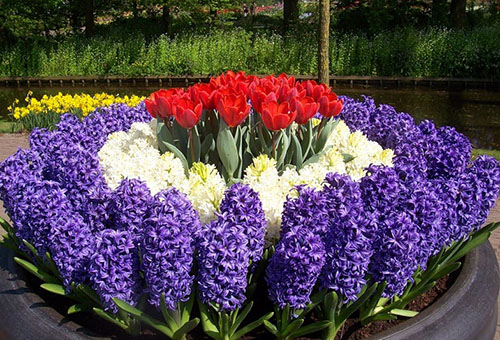
For all their touching charm, hyacinths are demanding and capricious plants. You can expect that with the arrival of the first warm days they will bloom the garden with bright colors, if you provide them with proper care.
Competent planting, regular watering and weeding, adherence to the intricacies of feeding are the basic principles that must be adopted when growing these perennials. We'll have to be patient and devote a lot of attention and time to the beds with hyacinths. But how nice it will be to see the results of your labors, when in early spring the plant is thickly covered with delicate fragrant flowers!
Why is the landing in the fall?
Hyacinth is found naturally, but it only grows in the Middle East and the Mediterranean. It does not grow independently in our country. In order for the plant to grow beautiful and bloom longer, watering is required regularly.
Before planting it, the roots need to be in dry soil for several months. The bulb is covered with a film that protects the plant from rotting during the growth process. If the roots of hyacinth are in moist soil, then it will not take root, it will start to rot. The water should not stagnate; for this, drainage is performed.

If in there is little rain in the summer, hyacinth will grow and bloom throughout the summer.When the plant that they plan to transplant has faded, you need to dig out the root, put it in a dry place and let it dry, and plant it in the ground in the fall. If done correctly, the plant will bloom in late spring.
Important! A flower that was not dug out before winter, but left in the ground, may die the next year due to pest damage or a large amount of moisture. So that the soil is not waterlogged, it is required to pour sand on the surface. ... If the plant was bought in spring, then in this case it is enough to put it in the refrigerator for several hours.
This will imitate the winter period, after which the plant is ready for planting. Roots must not be disturbed
If the plant was bought in the spring, then in this case it is enough to put it in the refrigerator for several hours. This will imitate the winter period, after which the plant is ready for planting. Roots must not be disturbed.

Autumn planting tulip, basic rules
When to plant hyacinths in the ground before winter
Planting dates for hyacinths
Readers often ask us when to transplant hyacinths: in spring or autumn. There is no fundamental difference in this matter, but some arguments lead to the conclusion that planting hyacinths in autumn is preferable to spring. First, by planting hyacinths in the fall, you will free up precious hours of spring time for yourself, which gardeners always lack: the summer residents have too many worries in the spring. And secondly, because the hyacinths planted in the fall bloom earlier than those planted in the spring.
When to plant hyacinths before winter? It is better not to rush with autumn planting work: planting hyacinths in August is pointless, because they will start rooting anyway only when the soil temperature drops to 8-10 ºC, and until then they will simply lie in the ground, attracting rodents, wireworms and others pests. It is not worth worrying that you will not have time to plant hyacinths before frost: sometimes the weather really brings unpleasant surprises in the form of a sudden prolonged cold snap that gradually turns into a frosty winter, but in such cases, you can always postpone planting hyacinths to spring. So what month should you plant hyacinths? The answer to this question depends on where you live.
When to plant hyacinths in the fall in the regions
The timing of planting hyacinths in the same area is very approximate, they can shift depending on weather conditions. Planting hyacinths in the fall in the Moscow region, Leningrad, Vologda and Kostroma regions is carried out in late September or early October, but in a warm autumn, bulbs can be planted in the first half of November. Although if forecasters predict an early winter, then it is better to finish work in October. Planting hyacinths in the fall in the Urals is carried out at about the same time as in the middle lane, but usually in November it is too late to plant flowers in this region. The planting time for hyacinths in the southern regions of Russia and in Ukraine is the first half of November, but sometimes, due to forecasts, you have to hurry up and plant the bulbs in October. Planting hyacinths in autumn in Siberia should end in the first half of October, and sometimes it is better to play it safe and plant flowers in September.
From the point of view of astrologers, auspicious days for planting hyacinth bulbs in September 2017 are the numbers from 1 to 5 and from 20 to 30, in October - from 1 to 4 and from 19 to 31, and in November - from 1 to 3 and from 18 to 30. It is strongly not recommended to plant hyacinths on September 6, October 5 and November 4.

